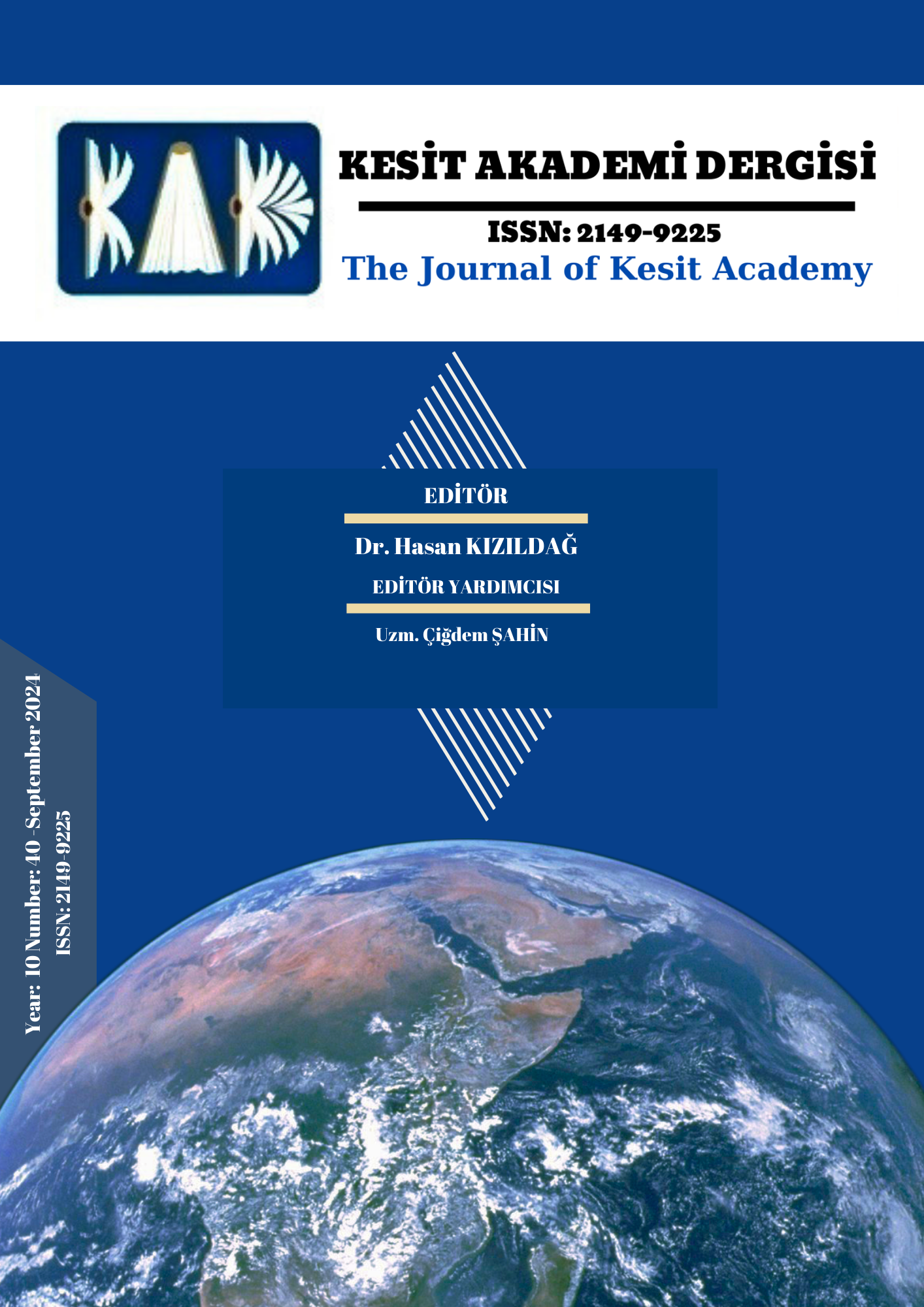Antopojenik Jeomorfoloji Kapsamında Topografik Değişimin Belirlenmesine Bir Örnek: Pazarsuyu Çayı Havzası (Giresun)
Author :
Abstract
Bu çalışmada Karadeniz Bölgesi’nin Doğu Karadeniz Bölümü’nde yer Pazarsuyu Havzasının antropojenik jeomorfolojisi incelenmiştir. Günümüzde birçok dinamik süreç ve faktörün etkisiyle gelişen-değişen jeomorfolojik birimler, aynı zamanda insan faaliyetlerine bağlı olarak da farklı boyut ve görünümde değişikliğe uğramaktadır. Yapılan çalışmada saha çalışmalarının yanı sıra farklı faktörlere ait farklı kurumlardan veri temin edilmiştir. Bu veriler yardımıyla havzaya ait farklı parametrelere ait kantitatif veriler üretilmiştir. Elde edilen bu veriler Uzaktan Algılama (UA) ve Coğrafi Bilgi Sistemleri (CBS) kullanılarak, coğrafi bir bakış açısıyla farklı analiz ve değerlendirmelere tabi tutulmuştur. Çalışmada çok amaçlı çok kriterli bir karar verme yaklaşımı olan AHP ile insanın çeşitli şekillerde gerçekleştirdiği ve özellikle jeomorfolojik birimler üzerinde etkili olan faaliyetleri ortaya koyması bakımından önemli bulgulara ulaşılmasını sağlayan Nir yöntemleri kullanılmıştır. Bu şekilde iki yöntemin bulgularının karşılaştırılması ile daha doğru bulgulara ulaşılması hedeflenmiştir. Elde edilen veriler sonucunda her iki yöntemde de Pazarsuyu Havzasının aşağı ve orta çığırında antropojenik jeomorfoloji koşullarının topoğrafik görünümde daha fazla değişime ve etkiye neden olduğu bulgusuna ulaşılmıştır. Ayrıca topoğrafya üzerinde en fazla baskı taş ocakları, akarsu yatağına yapılan Hidroelektrik Santralleri ve istinat duvarları, karayolu yapımı, yerleşim alanları ile sanayi tesislerinin kurulduğu alanlarda olup, bu alanlarda topoğrafyanın değiştirilerek havzanın doğal görünümünün bozulduğu tespit edilmiştir.
Keywords
Abstract
In this study, the anthropogenic geomorphology of Pazarsuyu Basin located in the Eastern Black Sea Region of the Black Sea Region was investigated. Today, geomorphological units, which develop and change under the influence of many dynamic processes and factors, also undergo changes in different dimensions and appearance due to human activities. In this study, in addition to field studies, data from different institutions belonging to different factors were obtained. With the help of these data, quantitative data belonging to different parameters of the basin were produced. These data were subjected to different analyses and evaluations from a geographical perspective by using Remote Sensing (RS) and Geographical Information Systems (GIS). In the study, AHP, which is a multi-objective multi-criteria decision-making approach, and NIR methods, which provide important findings in terms of revealing the activities carried out by humans in various ways and which are especially effective on geomorphological units, were used. In this way, it was aimed to reach more accurate findings by comparing the findings of the two methods. As a result of the data obtained, it was found that anthropogenic geomorphological conditions in the lower and middle reaches of the Pazarsuyu Basin caused more changes and effects on the topographic appearance in both methods. In addition, the most pressure on the topography is in the areas where quarries, Hydroelectric Power Plants and retaining walls built on the riverbed, highway construction, settlement areas and industrial facilities are established, and it has been determined that the natural appearance of the basin is deteriorated by changing the topography in these areas.





